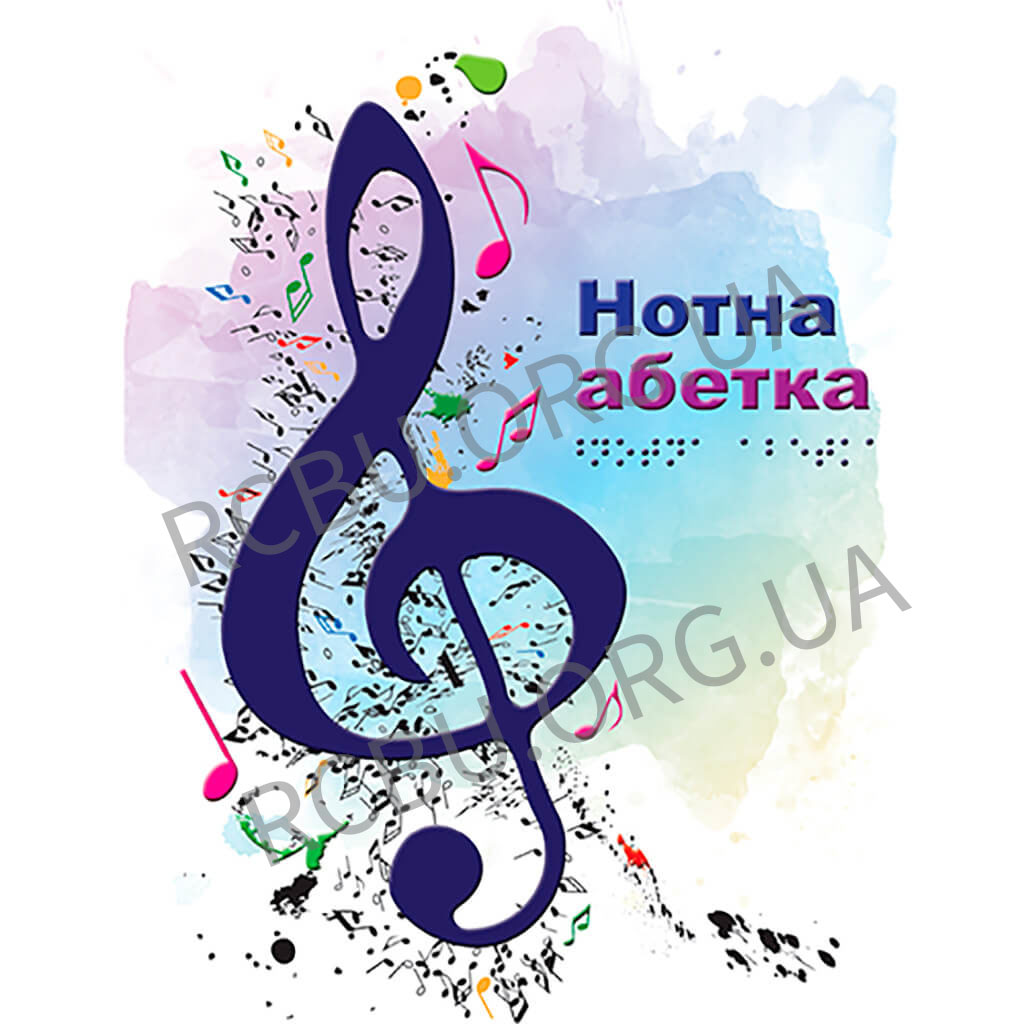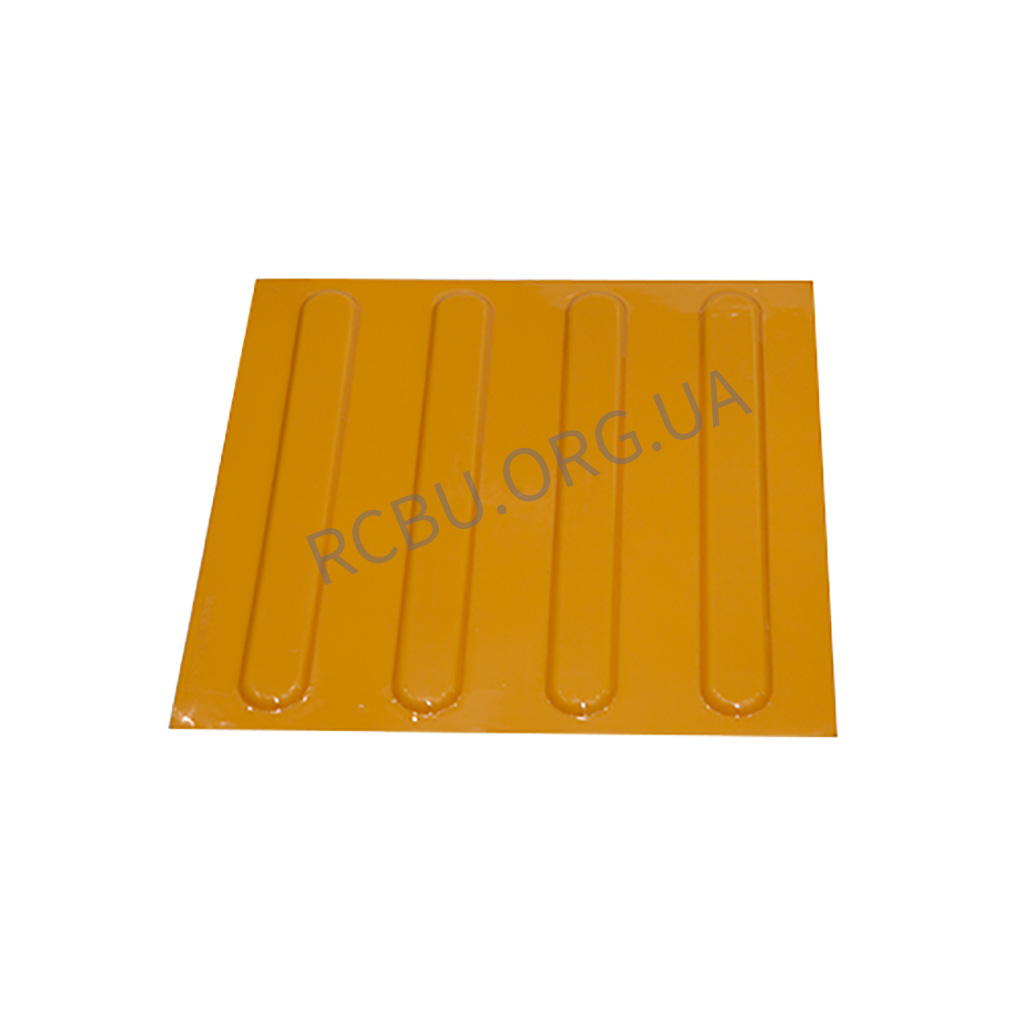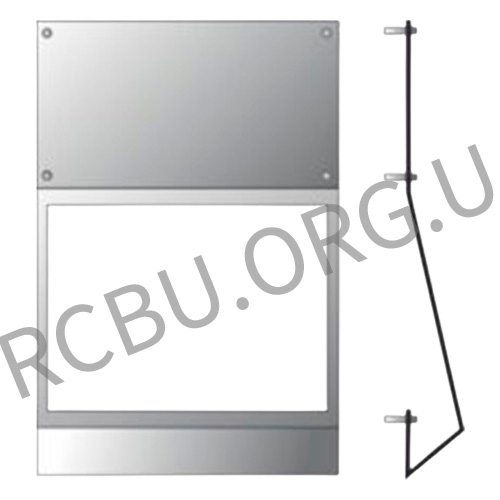
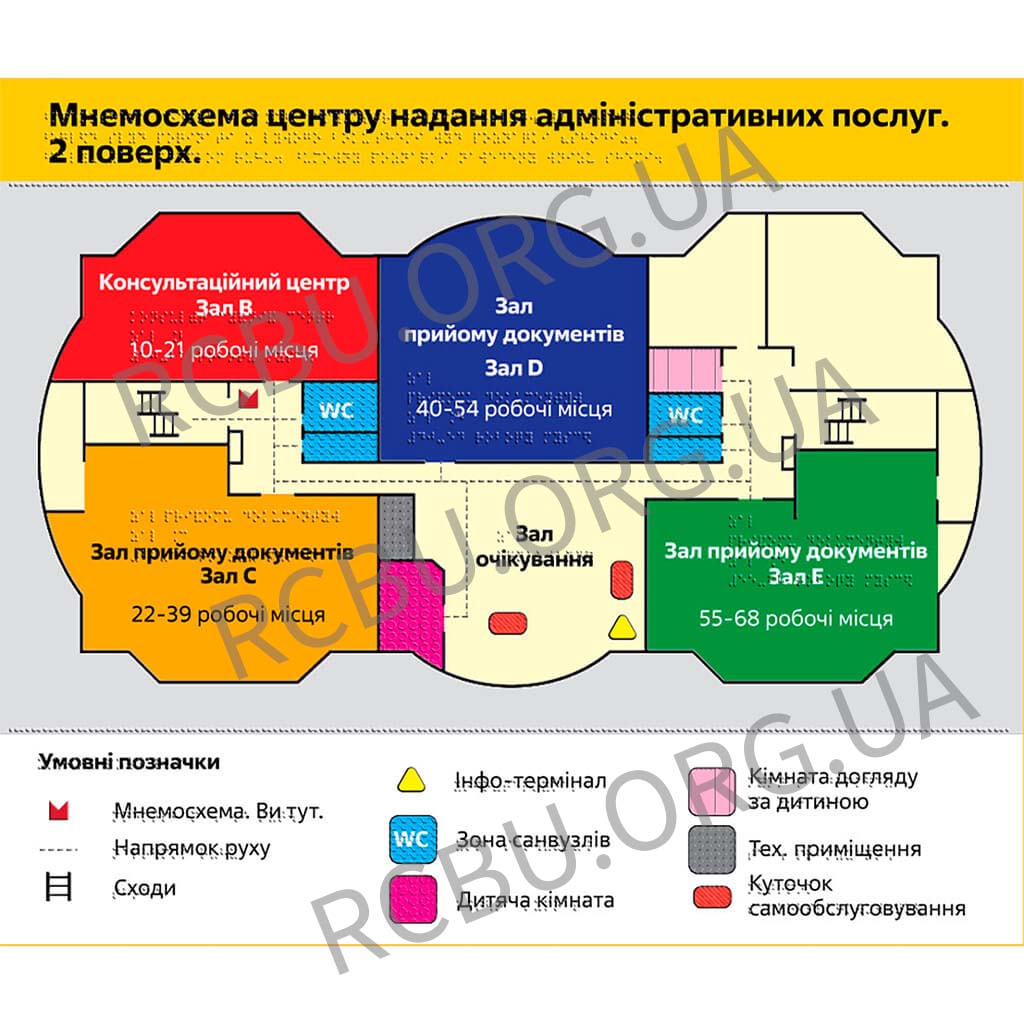
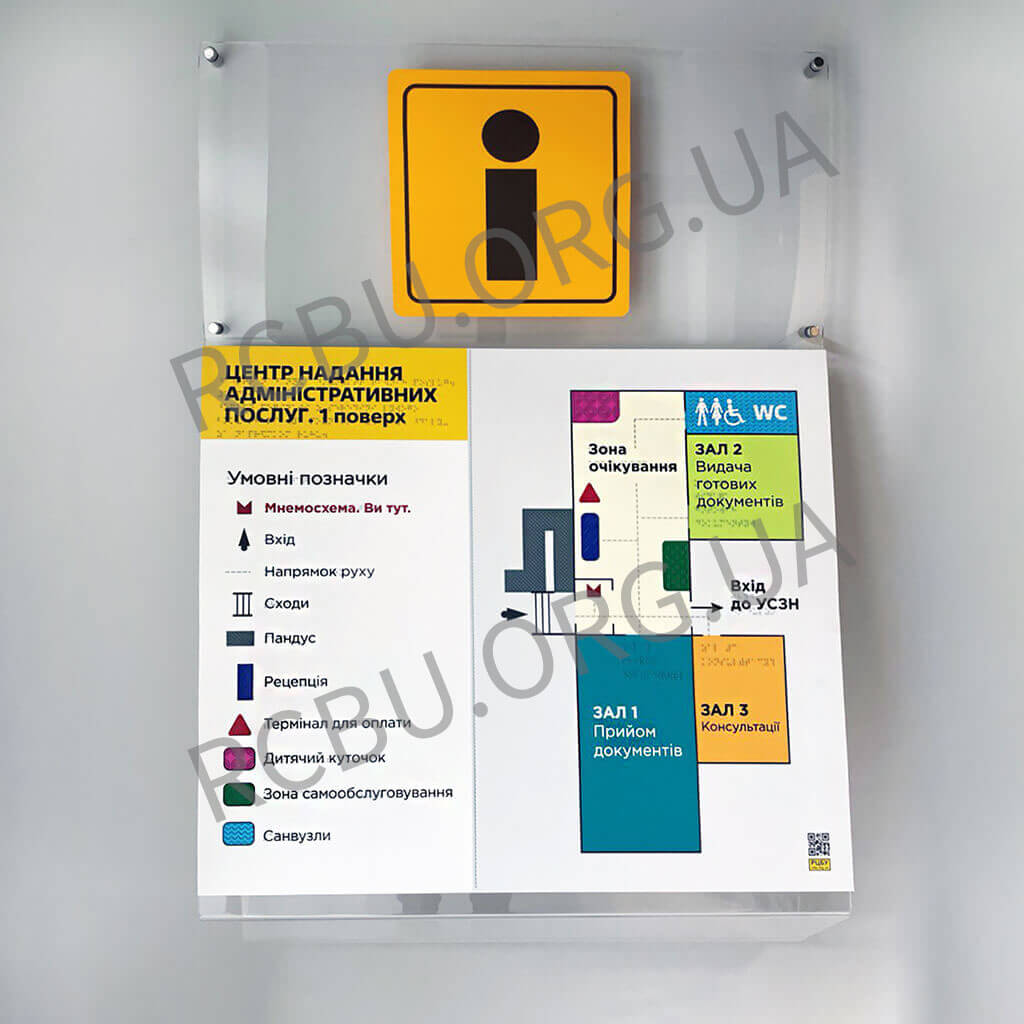
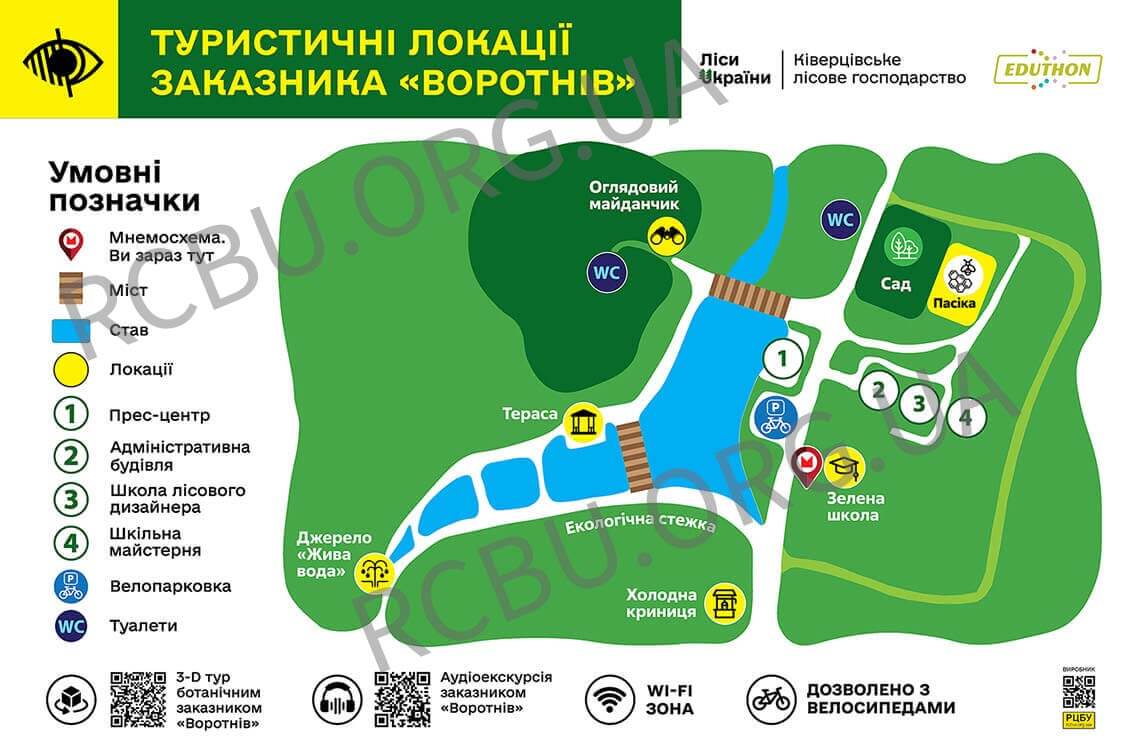
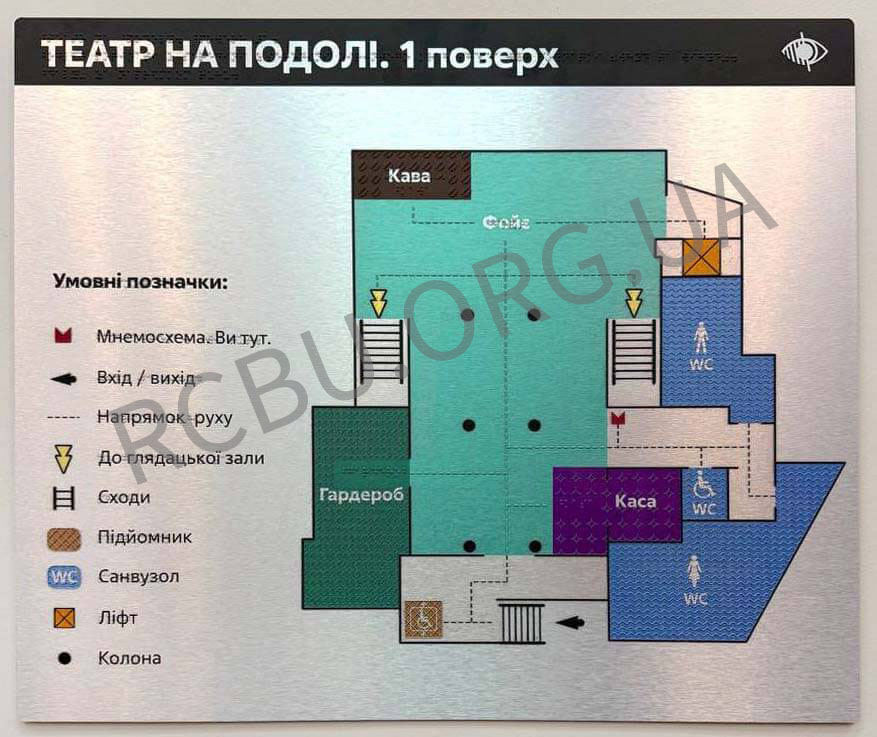
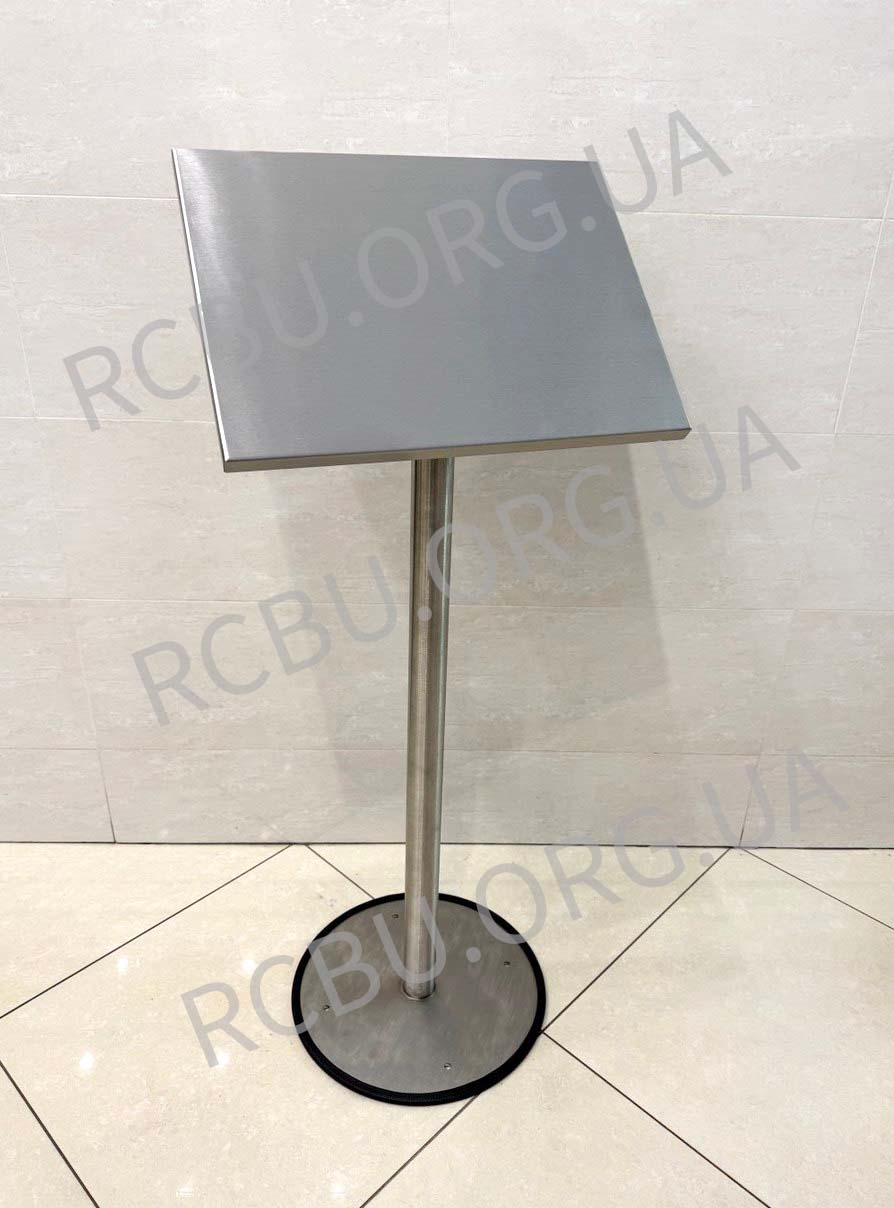
Mnemonics
What is a mnemonic diagram? What does it serve for?
A tactile mnemonic is one of the types of tactile information signs. It is a means of providing navigation (orientation) for visually impaired people, which is a tactile plan of a building, object, or individual locations in the surrounding area.
The main task of mnemonic schemes is to ensure the accessibility of the territory or premises for the independent safe movement of visually impaired persons.
Accordingly, a tactile mnemonic scheme should be understandable to a blind or visually impaired user by touch and allow them to independently navigate the area.
Classification of mnemonic schemes
Depending on the task and purpose, mnemonic schemes are divided into two main types:
- Tactile mnemonic scheme. It is produced in various versions from different types of materials: plastic (PVC), composite, plexiglass and metal.
- A mnemonic scheme with mounted audio. It is made with the addition of acoustic sound systems to transmit more accurate and complete information.
Mnemonics can also vary:
- Size: 470 x 610 mm (for placement on a floor in a room or bathroom), 600 x 800 mm (for placement on a floor with a large number of objects), 900 x 1180 mm (for open areas) and individual;
- by location (wall-mounted, mounted on screws or brackets and installed on a stand), floor-mounted (made on a stand and screwed to the floor) and mobile (also located on a stand, but can be easily moved if necessary);
- by material: surface, top coating, method of applying mnemonic elements and explanatory inscriptions;
- light-accumulating (visible in the dark) and conventional.
All tactile mnemonic schemes have a relief surface and are supplemented with Braille inscriptions.
Tactile mnemonic diagram: advantages and features
Tactile plans - mnemonic schemes - are used to help people with visual impairments navigate in space and in open areas. Mnemonics for blind and visually impaired people have a number of important functions:
- They organise the way of movement. Mnemonic schemes help blind people find out the location of offices, toilets, retail outlets, entrances, exits, etc;
- provide a variety of information. Mnemonic diagrams can be used to display any information needed, such as transport schedules, as well as complex diagrams, maps, and building plans;
- properly designed mnemonic diagrams are simple and easy to use. In addition to symbols and explanatory labels, the universal mnemonic scheme also includes embossed dot Braille. All users can use them to move safely in space on their own.
Mnemonic diagrams with audio: advantages
- Accuracy and information content - a spoken mnemonic conveys more information. This information can be much more accurate than a list of offices on the floor, a warning about a turn, a descent or a hazard on the way;
- accessibility - not all visually impaired and blind people know Braille, and any person without hearing impairments can listen to the explanation;
- speed - getting the necessary spoken information is much faster than reading it tactilely by touch;
- multifunctionality - suitable for many categories of users.
Tactile mnemonic schemes, with their many accessibility advantages, should be placed in public places and in all educational, medical and governmental institutions.
The mnemonic diagrams should show the following in tactile form and in Braille: a plan (diagram) of the building floors, evacuation routes, adjacent territory (if any), individual locations of the facility, etc.

